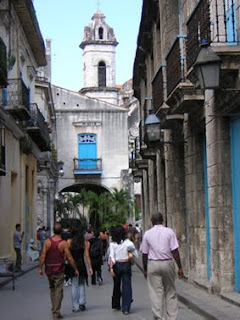
Havana is a resilient city. Its urban spaces witness the pass of time while time takes its toll on many buildings. However the city survives because its beauty is permanent and it´s its essence. Its poetry is narrated by everlasting stones, fossils incrustrated in columns and tiles and its marine wind and ambience.
We care about the future of the city because we appreciate its past and its splendor among many other things. We dream of of Havana asa magnetic city that will please Cubans while it attracts people from all over the world.
The new waterfront of Havana is to redefine its image. The Harbor sector has the potential to revitalize the city by becoming a contemporary commercial and recreational one that takes over the derelict existing one.
For the first time the comprehensive planning of all this area will allow its future redevelopment with lots of public spaces and ammenities, with lots of green areas and a new transportation system based on a light rail that is part of a bigger concept that links the harbor with the rest of the ciy, mosty the ajacent sectors -Old Havana, East Havana and Centro Habana.
The Master Plan for the harbor and East Havana show the attempt to provide a seamless layout with transitional areas and buffer zones. A seafront boulevard allows for a pedestrian friendly ambience where people can relaxnd rest being by the water.





